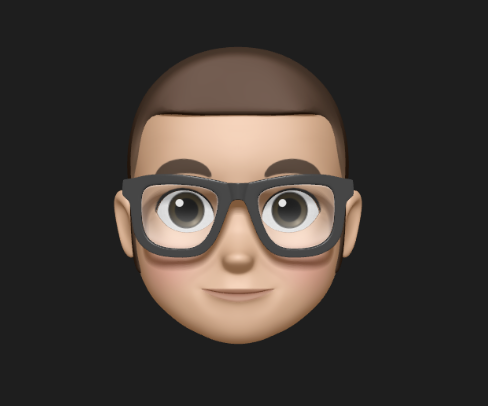 Your Money
Your Money What Are Personal Finance and How to Manage It
Your personal finances summarize your relationship with money. Discover why they matter and what to do to start managing them well.



Are you planning a trip to Europe?
Whether you're going for study, leisure, or work, this post might interest you.
The euro is the most well-known currency in Europe, but not all countries use it. In fact, many conduct their transactions using their own national currency.
So, how many countries use the euro as their currency? Why does it have such a big impact on the global economy?
In this article, you’ll find the answers.
We’ll also show you the current currencies used in countries that don’t operate with the euro. That way, you can manage your money more wisely when you arrive at your destination.
The euro (€), also known as the “single currency,” is widely recognized for its stability and global market influence. It is often referred to as the currency of the eurozone, as it has been adopted by much of the European continent.
All this has helped it become one of the most important currencies in the world.
But here we’re answering the question: how many countries use the euro as their official currency?
Currently, 20 countries in the European Union officially use the euro. These are nations that are part of the eurozone, though not the entire EU.
Here’s the list of countries:
Germany.
Austria.
Belgium.
Cyprus.
Croatia.
Slovakia.
Slovenia.
Spain.
Estonia.
Finland.
France.
Greece.
Ireland.
Italy.
Latvia.
Lithuania.
Luxembourg.
Malta.
Netherlands.
Portugal.
However, there are European territories and microstates that have also adopted the euro through special agreements or unilaterally:
Andorra, Monaco, San Marino, and Vatican City: have agreements with the EU allowing them to use the euro and mint their own coins.
Kosovo and Montenegro: use the euro as a measure of economic stability.
The euro symbolizes economic unity and provides key advantages to the countries that adopt it—from increased investor confidence to lower conversion costs.
The common design of euro coins features the EU or the map of Europe, as a symbol of unity and integration.
Specifically, the 1, 2, and 5 cent coins represent Europe’s geographic position in relation to Africa and Asia. This highlights the continent’s connection with other world regions.
Although the euro does not circulate in these regions, this visual representation allows comparison with other global currencies. As are the currencies of Africa or the currencies of Asia, which reflect different economic realities, but are equally relevant at the global level.
Currency of Europe and Its Value (Euro):
Currency | ISO Code | Symbol | Current Value Against the Dollar (USD) |
Euro | EUR | € | 1 EUR = 1.138 USD |
Data retrieved on 03/06/2025 from Xe.com.
The euro is one of Europe’s main currencies, but it's not the only one used across the continent. For example, in the United Kingdom, the British pound is the official currency, used in all four constituent nations: England, Wales, Scotland, and Northern Ireland.
Much like Central American currencies, some nations in Europe have chosen to retain their national currencies, both within and outside the EU.
Here’s a table listing countries that do not use the euro and the currencies they currently use:
Country | Currency | ISO Code | Symbol |
Albania | Albanian lek | ALL | L |
Belarus | Belarusian ruble | BYN | Br |
Bosnia and Herzegovina | Convertible mark | BAM | KM |
Czech Republic | Czech koruna | CZK | Kč |
Denmark | Danish krone | DKK | kr |
Hungary | Hungarian forint | HUF | Ft |
North Macedonia | Macedonian denar | MKD | ден |
Moldova | Moldovan leu | MDL | L |
Norway | Norwegian krone | NOK | kr |
Poland | Polish zloty | PLN | zł |
United Kingdom | British pound | GBP | £ |
Romania | Romanian leu | RON | lei |
Serbia | Serbian dinar | RSD | дин. |
Sweden | Swedish krona | SEK | kr |
Switzerland | Swiss franc | CHF | Fr. / CHF |
Turkey | Turkish lira | TRY | ₺ |
Ukraine | Ukrainian hryvnia | UAH | ₴ |
It’s worth noting that some of the countries listed above are EU members but have not yet adopted the euro. This includes Bulgaria, Czech Republic, Hungary, Poland, Romania, and Sweden.
Denmark, on the other hand, opted out voluntarily through a negotiated clause.
Since its inception, the euro has positioned itself as one of the world’s strongest and most influential currencies. This makes it a key player in the global economy, both within and beyond Europe.
Its main impacts include:
A global reserve currency. The euro is the second most-used currency by central banks for international reserves, reinforcing its role in global finance.
Strengthening economic cohesion. Using the euro promotes more aligned policies among adopting countries, supporting a stable and coordinated economic environment.
Boosting trade. Eliminating currency exchange among eurozone countries reduces costs and risks, facilitating trade within the bloc and with the rest of the world.
Influencing global financial decisions. European Central Bank policies, such as interest rate adjustments, affect markets and capital flows beyond Europe.
Attracting foreign investment. The eurozone offers a large, low-risk market, making it attractive for international capital.
As you can see, the euro represents integration, stability, and economic power both inside and outside Europe.
More and more people are looking for ways to keep their money in currencies such as the Euro. Especially if you live in Latin America, where some countries' economies face problems of instability. In fact, Latin American currencies tend to fluctuate more than others.
The good news is that nowadays you can use apps to protect your savings.
One of them is DolarApp, which lets you open a digital account not only in digital euros but also in digital dollars.
Another advantage is that you can link a local bank account to the app and convert funds without paying any fees. For example, from MXN to EURc or vice versa.
Currency conversion between linked accounts is free, and you always benefit from a fair exchange rate.
You can exchange currencies at airports, train stations, banks, and some hotels. You can also use local exchange offices or apps like DolarApp to hold a balance in digital euros.
The value of the euro changes daily but usually hovers around 1 EUR = 1.10 USD. Fluctuations between these currencies are generally small unless major economic events occur.
Before the euro was introduced, each country used its own national currency. For example, Spain used the peseta, France the franc, Italy the lira, and so on.

Los países tienen fronteras. Tus finanzas, ya no.
 Your Money
Your Money Your personal finances summarize your relationship with money. Discover why they matter and what to do to start managing them well.

 Your Money
Your Money In this post, we'll teach you how to convert your gross salary to net salary in Mexico so you know how much you really earn from your work.


